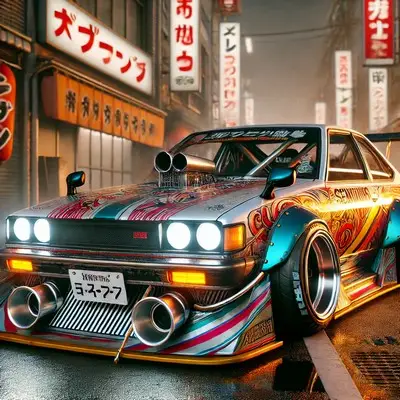Table of Contents
- Introduction to Shamate Subculture
- The Origins of Shamate
- Characteristics of Shamate
- Shamate and Social Criticism
- The Decline and Transformation of Shamate
- Conclusion
Introduction to Shamate Subculture
In contemporary sociology, subcultures provide rich insights into how marginalized or alienated groups navigate societal pressures, and the Shamate subculture is a prime example of this phenomenon. Emerging in the early 2000s in China, Shamate (杀马特), loosely translated as “smart,” represents a youth movement characterized by flamboyant hairstyles, bold fashion, and an intentional rebellion against the conservative and conformist norms of mainstream Chinese society. Often considered an expression of rural disenfranchisement, the Shamate subculture is more than just an aesthetic choice; it is a reflection of the social, economic, and cultural tensions prevalent in China during rapid modernization and urbanization.
This article will provide an in-depth exploration of the Shamate subculture, analyzing its origins, core characteristics, social meanings, and the way it both challenges and is shaped by dominant cultural narratives. As we delve into this, we will also explore the sociological implications of this movement in the broader context of class, identity, and resistance.
The Origins of Shamate
Rural Roots and Urbanization
The rise of Shamate can be understood within the context of China’s aggressive urbanization and economic reform, which began in the late 20th century. Millions of rural Chinese migrated to cities in search of better opportunities, yet many found themselves marginalized in urban environments. This migration led to the emergence of a large working-class youth population, disconnected from both traditional rural life and mainstream urban culture. Shamate primarily consists of young individuals from these rural backgrounds who find themselves working in low-wage factory jobs in major cities.
For these young migrants, Shamate became a form of identity expression that allowed them to carve out a space in an environment that often rendered them invisible. Their distinct style, which borrows elements from Japanese visual kei and Western punk aesthetics, became a way to assert their individuality in the face of homogenizing pressures from both their rural origins and urban life.
A Reaction to Socioeconomic Marginalization
The Shamate subculture can also be seen as a direct response to the socioeconomic marginalization these individuals experience. Migrants in urban areas often face discrimination, being labeled as outsiders or “floating populations” (流动人口). The frustrations stemming from their lack of upward mobility, limited access to education, and precarious employment conditions manifest in their rebellious appearance and attitude.
Sociologically, this mirrors similar subcultures in the West, such as the punk movement, which arose in response to the alienation experienced by working-class youth. For Shamate participants, their visual divergence from societal norms is not merely a fashion statement but a symbolic rejection of the dominant capitalist ideology that perpetuates their disenfranchisement.
Characteristics of Shamate
Distinctive Aesthetic
Shamate individuals are perhaps best known for their distinctive aesthetic, which includes brightly colored, gravity-defying hairstyles, heavy makeup, and eclectic fashion choices. Their appearance, which incorporates exaggerated elements of Japanese and Western pop culture, is designed to shock and provoke. Sociologically, this form of bodily expression can be understood as a form of symbolic resistance—a concept wherein individuals use visual markers to challenge dominant cultural norms.
The flamboyant styles adopted by Shamate participants act as a visual critique of the societal expectations placed on them, particularly the expectation that they should assimilate into the norms of urban capitalist society. By choosing such an extreme form of self-presentation, Shamate individuals signal their refusal to conform to the standards of respectability that often exclude them based on their rural, working-class background.
Use of Digital Platforms
Another defining feature of the Shamate subculture is its heavy reliance on digital platforms, particularly in its early years. Chinese social media sites like QQ and later WeChat became important spaces for Shamates to connect, share their fashion styles, and express themselves in ways that might be repressed in offline settings. In a sense, the virtual world offered a safe space for members to articulate their dissatisfaction with societal structures.
Digital platforms also facilitated the spread of the subculture, allowing it to move beyond isolated rural-urban migrants and become a nationwide phenomenon. This also highlights how the internet serves as a cultural vehicle for subcultures, especially those that face marginalization in physical spaces.
Performance of Gender and Identity
Get the full article AD FREE. Join now for full access to all premium articles.
View Plans & Subscribe Already a member? Log in.





